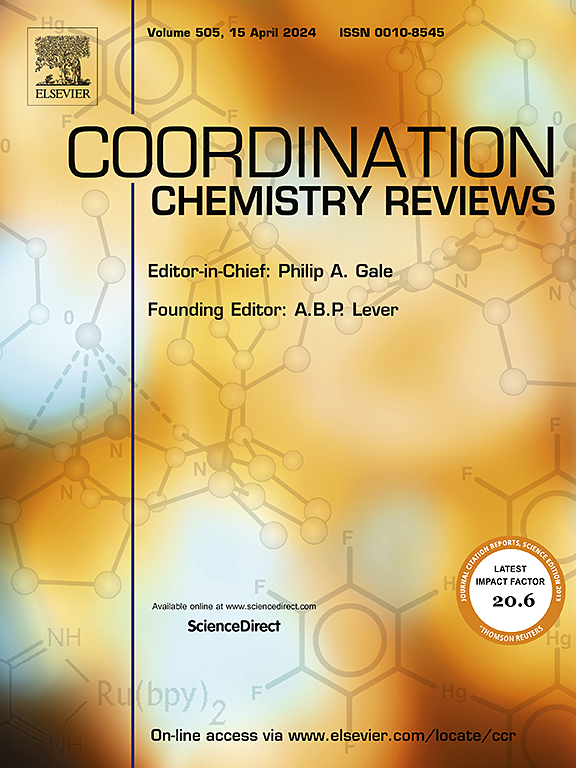纳米酶在抗菌领域的应用:机制和优化策略
IF 23.5
1区 化学
Q1 CHEMISTRY, INORGANIC & NUCLEAR
引用次数: 0
摘要
细菌感染每年造成数百万人死亡,滥用抗生素导致耐药细菌,使情况更加恶化,因此迫切需要开发能够有效对抗耐药细菌感染的新型抗菌剂。纳米酶作为一类新兴的纳米材料,具有类似酶的多功能活性、高稳定性、可修饰性和低成本等优点。它们在杀灭耐药细菌方面显示出巨大的潜力,可能为解决耐药细菌引起的感染问题提供一种可行的方法,在各个领域受到广泛关注。本文综述了纳米酶的抗菌机制和分类。本文还讨论了几种提高纳米酶抗菌效果的策略,如通过共价键、静电相互作用或拓扑相互作用来提高其靶向能力的表面修饰。此外,本文还重点介绍了复合纳米酶的创建,以实现多功能协同和级联抗菌作用。最后,对纳米酶抗菌治疗面临的挑战和前景进行了展望。本文章由计算机程序翻译,如有差异,请以英文原文为准。
Nanozymes in the field of antibacterial applications: mechanisms and optimization strategies
Bacterial infections cause millions of deaths each year and the situation is aggravated by the misuse of antibiotics which induces drug-resistant bacteria, leading to an urgent requirement to develop novel antibacterial agents that can effectively combat drug-resistant bacterial infections. Nanozymes have several advantages as an emerging class of nanomaterials including multifunctional enzyme-like activities, high stability, modifiability, and low cost. They have shown great potential in killing drug-resistant bacteria and may offer a viable approach to address the issue of infections caused by drug-resistant bacteria, gaining widespread attention in various fields. This review encapsulates the underlying antibacterial mechanisms and classifications of nanozymes. It also discusses several strategies to enhance the antibacterial efficacy of nanozymes, such as surface modifications to improve their targeting abilities through covalent bonding, electrostatic interactions or topological interactions. What's more, the review highlights the creation of composite nanozymes to achieve multifunctional collaboration synergy and cascade antibacterial effects. Finally, the challenges and future prospects of nanozyme-based antibacterial therapies are discussed as well.
求助全文
通过发布文献求助,成功后即可免费获取论文全文。
去求助
来源期刊

Coordination Chemistry Reviews
化学-无机化学与核化学
CiteScore
34.30
自引率
5.30%
发文量
457
审稿时长
54 days
期刊介绍:
Coordination Chemistry Reviews offers rapid publication of review articles on current and significant topics in coordination chemistry, encompassing organometallic, supramolecular, theoretical, and bioinorganic chemistry. It also covers catalysis, materials chemistry, and metal-organic frameworks from a coordination chemistry perspective. Reviews summarize recent developments or discuss specific techniques, welcoming contributions from both established and emerging researchers.
The journal releases special issues on timely subjects, including those featuring contributions from specific regions or conferences. Occasional full-length book articles are also featured. Additionally, special volumes cover annual reviews of main group chemistry, transition metal group chemistry, and organometallic chemistry. These comprehensive reviews are vital resources for those engaged in coordination chemistry, further establishing Coordination Chemistry Reviews as a hub for insightful surveys in inorganic and physical inorganic chemistry.
 求助内容:
求助内容: 应助结果提醒方式:
应助结果提醒方式:


